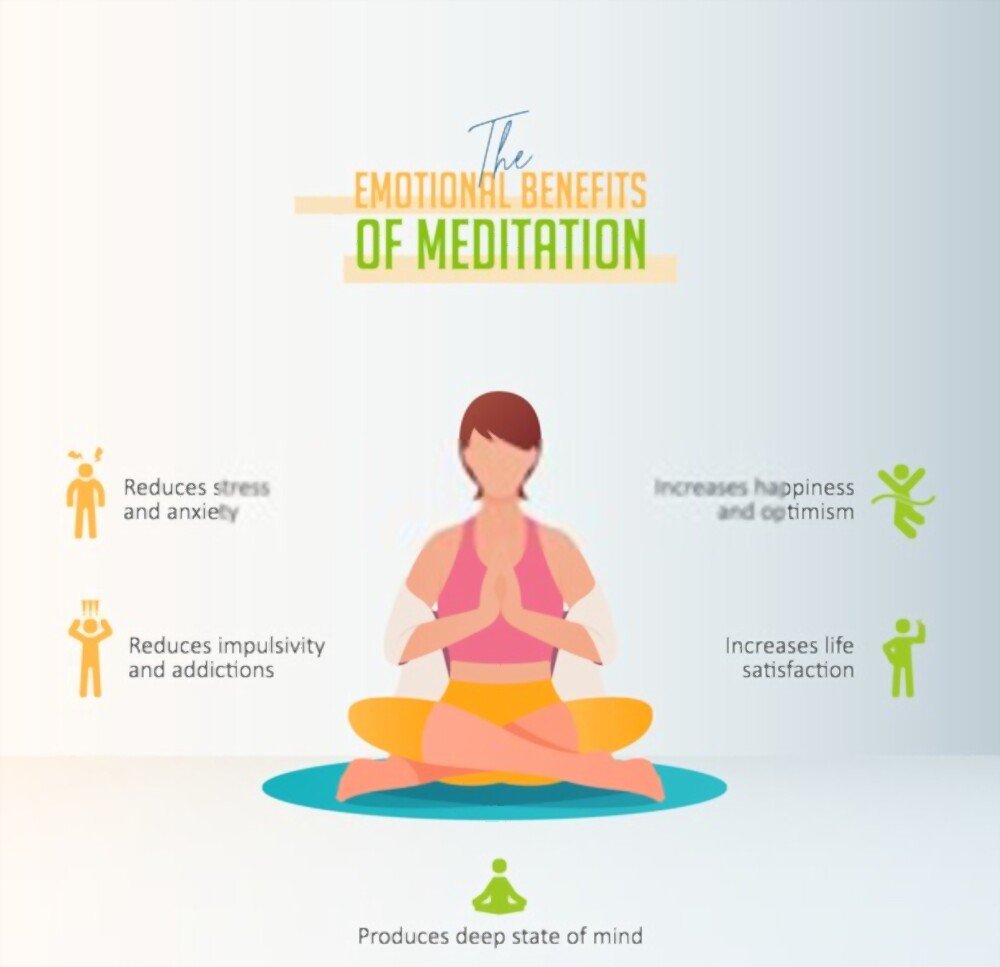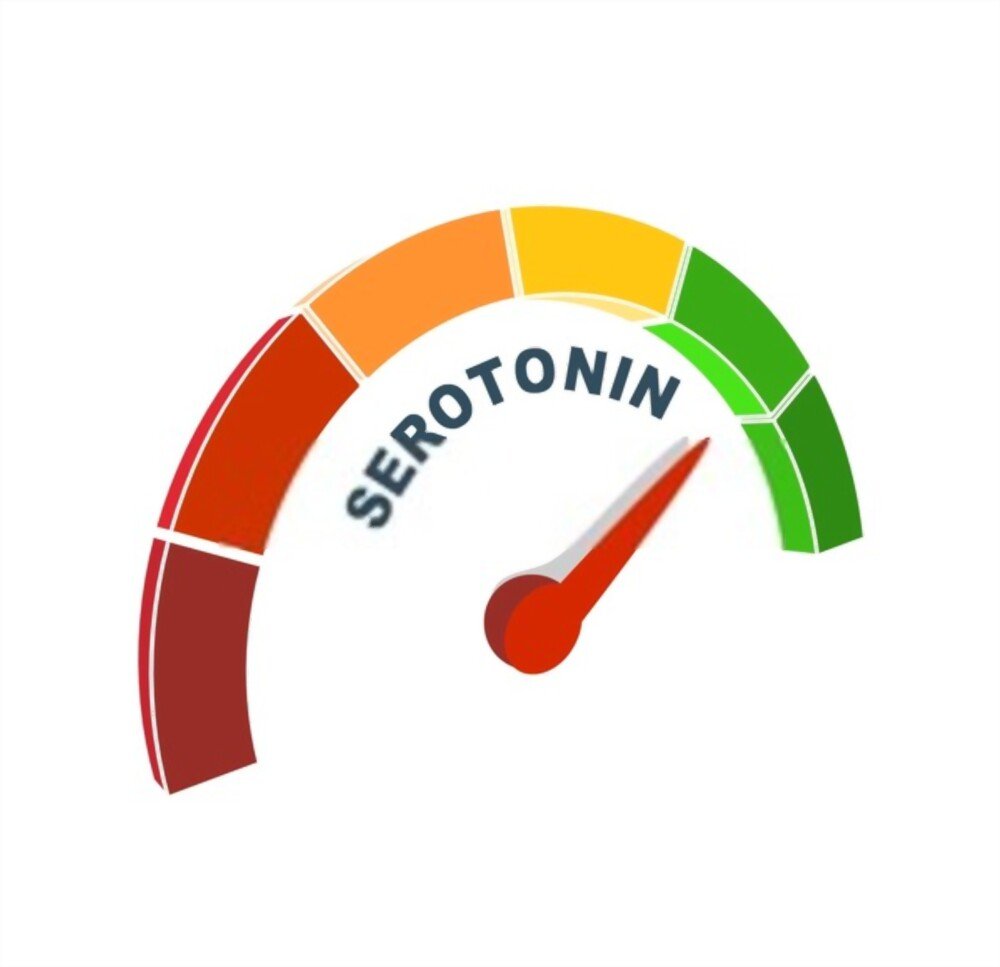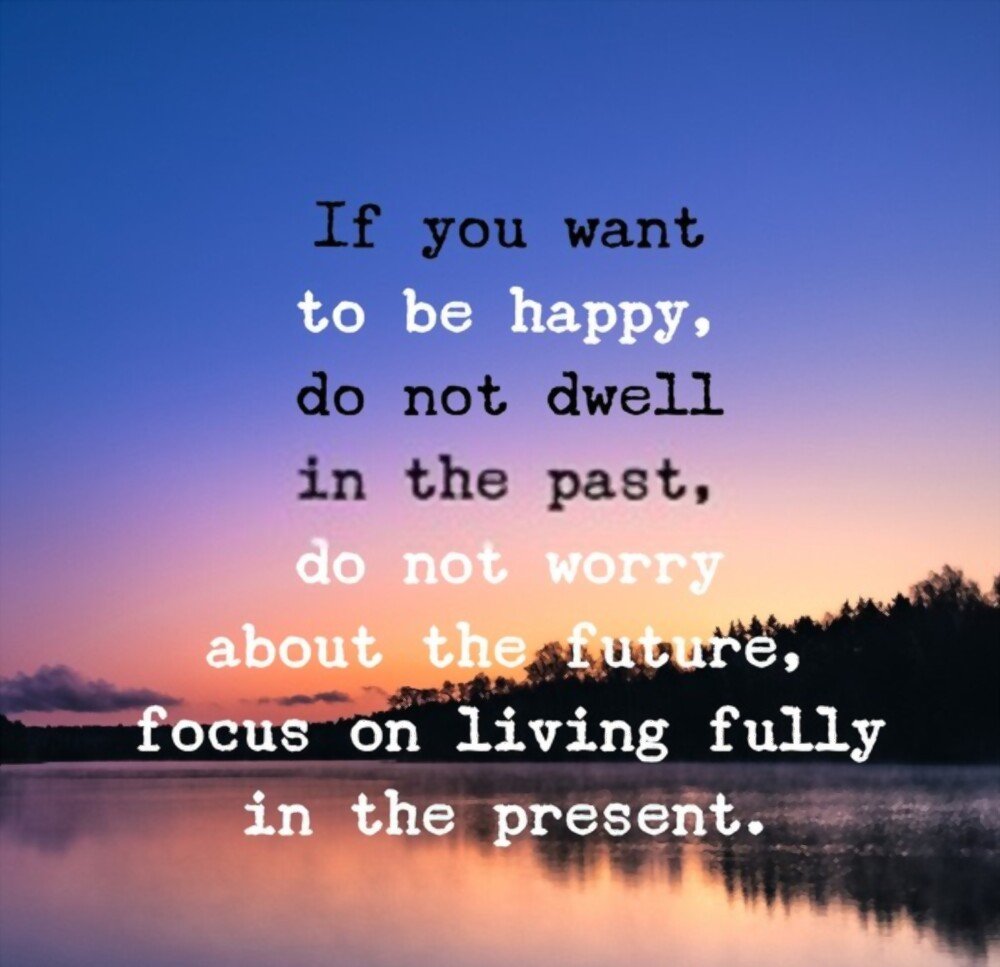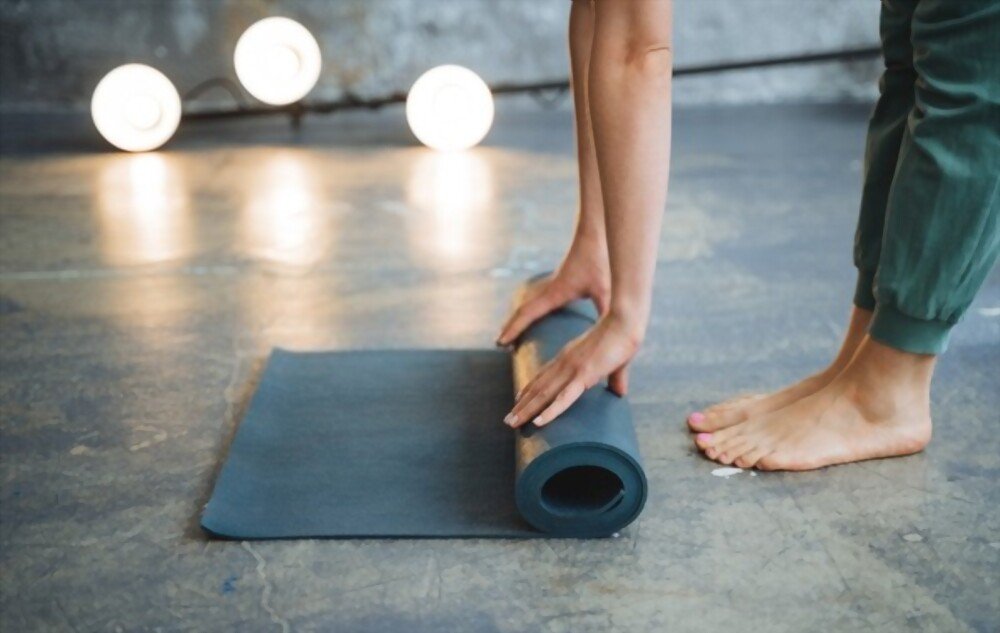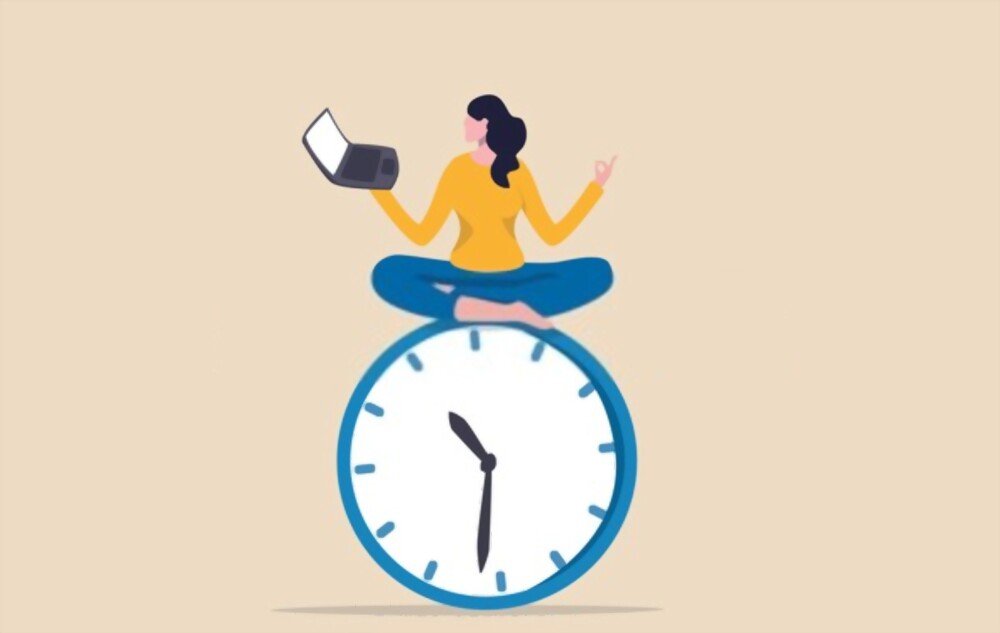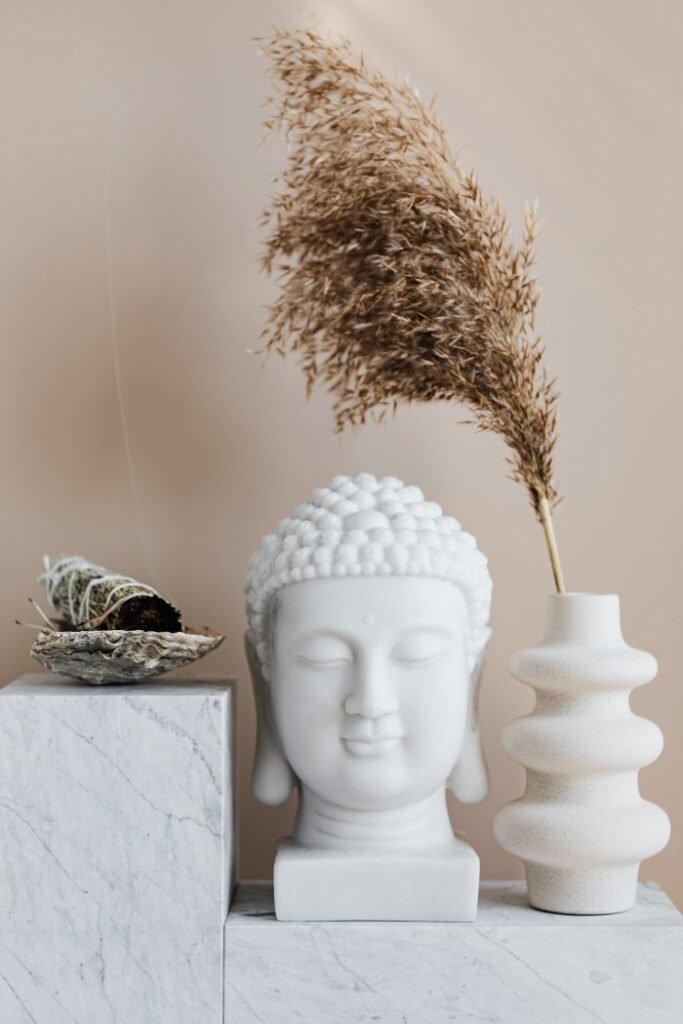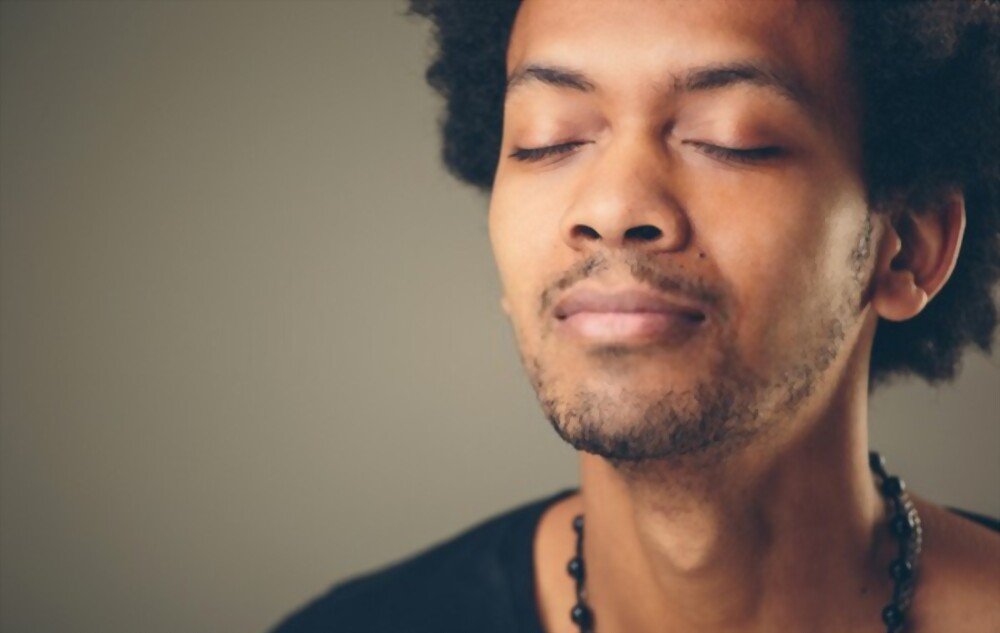Let’s dive right into the ultimate meditation guide for beginners.
What is Meditation Actually?
Everyone has at least heard about meditation, but very few people actually know what meditation actually is.
Most people think that it’s just thinking and breathing deeply, but there is much more to it than that.
It is a complex process that has many benefits when done properly.
Meditation has increased in popularity, and there are many big misconceptions that surround meditation.
The first of these is that you have to sit quietly and clear your mind when meditating.
This is wrong because you don’t have to.
It only helps to do so, but you do have other options available to you.
Another misconception is that you only think of one thing when meditating or can’t think of anything just being at peace.
Mediation is much more complex than these simple answers, and to do it properly, you have to be able to understand it.
In essence, meditation is where you are thoughtfully aware.
This is a hard process.
You need to be able to be aware of what you are and aren’t experiencing.
It is an activity in concentration and mindfulness.
It is about living in the moment, and there are many different ways to achieve this level of mediation.
There is only one goal with mediation, and that is finding personal peace.
It’s trying to be calm and silent while still remaining awake and alert. This will have many benefits when achieved successfully.
Why It’s Important To Meditate?
You may be asking yourself why you should practice meditation, and there are many answers to this question as well.
All you have to do is look at the benefits that mediation has to offer you.
Meditation will help to center you.
Many people will go through life unable to find their inner peace or understand themselves.
For example, you may get angry about something and be unable to understand what you’re angry about, but when you meditate, you’ll be able to learn to figure out what your subconscious is trying to tell you.
You’ll find some of the benefits below.
Stress
The biggest reason that people practice meditation is that it is an effective way to reduce stress.
There are numerous ways to reduce stress out there, but this is an effective and easy way that has other benefits as well.
There are already many studies out there saying that meditation is the most effective way to conquer stress, anxiety, and even stave off depression.
If you’re more prone to stress, then mediation is even more vital to you.
Focus
Meditation is also known to help to increase your focus, as it’ll help you to learn to be aware and single down your thoughts.
The focus will help you in your daily activities, but it is also known to improve your chances of receiving a promotion at work due to improving productivity, helping you to get through daily tasks easier, and even helping with schoolwork.
Focus can be used in any part of your life to help you get through something or accomplish something.
When you lack focus, you lack the ability to accomplish your dreams. That is why it is extremely important to be able to turn your attention to or away from something.
Health
Increasing your health is also a big reason that you’ll want to practice meditation.
Meditation will help to lower your heart rate, which in turn will help you to lower your blood pressure, lower anxiety, and allow for deeper relaxation.
It will also slow your respiratory rate and cortisol levels.
Health levels are extremely important, and over-the-counter mediation and prescriptions will only do so much.
Sometimes you really do need holistic remedies, and meditation is one of the easiest ones to use.
Relaxation
Not enough people can find relaxation in their lives, and after a while frustration after frustration will just build up.
You may not even know the tension that you are keeping in your body.
You may try to run away from this tension by getting massages, going to the gym, or anything else, but it is not taking care of the root of the problem.
When you decide to meditate, you’re learning to take care of the root of the problem, helping you to relieve your tension in a healthy and natural way.
This will also help you to stay relaxed during the day.
All of these problems are going to make your muscles tense and sore.
It’ll also contribute to bad habits such as teeth grinding and nail-biting.
It can even keep you from having good dreams, but mediation can help with this issue as well.
It is recommended that you meditate before bed for this reason.
It’ll help you to relieve the tension so that your dreams will help you instead of hurting you.
It’ll help you to get better sleep because your muscles are not in knots as well.
Happiness in Relation to Meditation
There is a happiness factor with mediation, as it will help to increase your quality of life.
When you’re happier, then you’ll be able to see things a little more clearly and for what they are.
It’ll help to clear health benefits, and it’ll even help to bring you a sense of calmness even when you are experiencing negative emotions.
You will be able to interact with others a little easier.
You’ll experience a sense of awakening that will help you to find out what you are capable of.
Meditation will help you to live fully and wisely.
You will learn to live and experience the moment.
Most people are stuck in either the past or dwelling on what could happen in the future.
Meditation in Regards to Chakra
Chakras are a center of spiritual energy residing in your body, and when you have your chakras balanced, then you’ll feel balanced as a whole.
It can help your emotional state, organ function, and even your immune system.
What most people are unaware of is that chakras can become blocked, and even though your body continues to work, it will be unbalanced.
This can cause you to be upset mentally and emotionally.
It can also cause you to become ill. Meditation helps you to unblock your chakras so that you are at peace with yourself once more.
There are seven main chakras that you need to know about and be responsible for.
Chakras are not as complicated as they sound, but you’ll find that meditation can help to open them as well.
It’ll give you more natural energy.
Your chakras run vertically through your body.
Chakras will open and close depending on how your body responds to your emotions.
When you are experiencing a negative emotion, then your chakras can become hindered or even blocked, which will keep your natural energy from balancing.
Meditation will restore this balance by restoring the balance to your mental and emotional state.
When opening the chakra, your body will naturally balance itself again as well.
Your body’s natural energy is also known as its aura, and each chakra is represented by a color.
How Meditation Helps Depression
Many people have heard that meditation will help depression, but most people are unable to grasp how meditation helps.
This chapter is dedicated to helping you to understand how meditation will help you battle depression, stress, and anxiety.
No matter if it’s mild anxiety all the way up to anxiety disorders that are harder to conquer.
More and more people are suffering from depression due to daily experiences because people are not forcing themselves to understand why they feel something, confront their feelings, or grow as a person.
Some people do have legitimate reasons to feel depressed due to their situation, but no matter what, if you feel depressed, then it is something that you need to take into your own hands to fix.
Even if you are already taking antidepressants, going to counseling, or using another method to help you with your depression, meditation can be added to any routine to help you get the desired results.
It Develops the Hippocampus
The hippocampus is the center of emotions, memory, and the nervous system.
Those who practice meditation are known to have a stronger hippocampus than those that suffer from depression, which often deals with a weaker one.
This is not a change that will happen overnight or even in the first week that you’re practicing your meditation, but it will strengthen your hippocampus over time.
This will help you to be a healthier and happier you.
You will not likely notice these changes at first because it is a gradual shift in your emotions.
A strengthened memory will help you to put events into perspective a lot easier as well, which will help to make sure that you do not overreact to events or occurrences as much, which can happen to those who suffer from depression.
It Develops Your Prefrontal Cortex
The left prefrontal cortex, which is the part of your brain that controls happiness, was found to be very highly developed in meditation practitioners, as well as very underdeveloped in those diagnosed with depression.
Your ability to find happiness will be determined by your ability to process information and put it into proper perspective.
This requires a level of focus and mental awareness that meditation can give you.
Happiness is extremely hard to come by when you’re depressed.
Even if positive events are happening to you.
A developed prefrontal cortex will help you to see the happier events and interactions in life.
It Raises Your Serotonin Levels
Meditation has been found to raise the levels of serotonin and norepinephrine, the same chemicals that are raised by anti-depressants.
This doesn’t mean that if you’re on anti-depressants you should quit them.
Though, over time you may not need them.
Talk to your doctor as you get healthier to decide if you should cut down or cut them out altogether.
Raising your serotonin levels naturally is incredibly healthy, and it does not have negative consequences.
If you notice that meditation is making you extremely happy, then you’ll want to add it more often.
Even if you aren’t noticing a difference, there is one that will build up over time, and you should stick with it.
A Feeling of Wellness
Many people diagnosed with depression say it comes with a feeling of something missing, while meditation practitioners tend to feel that their lives are more whole.
This is a general feeling of wellness that will help to make you feel more fulfilled.
It’ll help you to handle the boredom of daily tasks without feeling like they are pointless, which is a common trait for people who are depressed.
Meditation recreates the brainwaves that are used to treat patients with depression.
Inner peace is one of the main reasons that people practice meditation, and you can find spiritual peace in meditation as well if you choose to do so for spiritual meaning.
It all depends on what you’re looking for.
Just go into a meditation session with your intent held clearly in your mind.
How Meditation Can Help Improve Brain Function
Meditation will actually help to improve your general brain function as it helps you to expand your brain.
Your brain may not be a muscle, but it can still be built up by one so that you create more neuropathways which strengthen your ability to function and recall.
This can help you to handle stressful situations a lot more easily.
You’ll be able to address a situation as they come up with more brainpower on how to figure out a solution.
This will help you to get through the hard times in life without as much work.
Long Term Control
Meditation helps you to gain better, more long-term, control of your emotions by being able to learn how to recognize them.
Most people can’t recognize what they feel for what it is.
Therefore, they are unable to express their emotions.
Short-term control can be easy to gain, but long-term control is harder, as it requires you to learn different habits on how to handle and sort through stress and anxiety.
This is something that meditation will help you to accomplish.
Build Stronger Connections
Meditation will help you to connect emotionally with people in a stronger way with a stronger sense of compassion.
Compassionate meditation is not the only form of meditation that will help you to do this, which you will learn about later in this blog post, but mindfulness meditation has this goal as well.
You’ll learn that you can put together different forms of meditation to get the desired results as well.
It’ll help to make sure that you are able to tell when your body is trying to tell you something as well as if you are upsetting someone.
It helps you to be empathetic.
Increasing Brain Density
Meditation is actually known to increase brain density, giving a wider and deeper emotional range, as well as improved memory.
Most people have a stunted emotional range because they did not have a way to help themselves develop.
This is not the case if you practice meditation.
Once again, this is a long-term benefit that you will achieve from meditation.
It is not something that you’ll be able to have overnight, but it will develop and stick with you for the rest of your life.
Remember that your brain is a cluster of nerves, and increasing your brain density is going to help you overall.
Faster Processing
Meditation help teach your brain to process information faster, allowing you to think faster overall.
This will allow you to adapt quickly to any situation you’re put in.
If you can adapt to a situation, then you are more likely to handle whatever life throws at you without as much anxiety or stress.
This is extremely important if you already have a high-stress level or an anxiety disorder.
It’ll help you to be able to push out of your comfort zone without feeling overwhelmed.
Improving Creativity & Focus
Increased brain function from meditation improves creativity and focus, and it’ll even help you to multitask a little better.
This will help you to use your time a little wiser, helping you to accomplish more and feel better about yourself.
It allows you to be a more well-rounded person, which is difficult when you suffer from anxiety or depression.
When you’re more creative, you’ll have more outlets available to you as well, which will help you to handle depression in other productive ways.
Try picking out hobbies or starting to focus on more creative outlets to help you fill your idle time as well.
Push outside of your comfort zone whenever you can to fight depression.
Improving Your Reactions
Meditations help us learn to react better to situations that would usually bring us down.
With meditation, you are better able to put everything into perspective because you learn more about yourself and how other people are going to interact with you based on both how they feel about you and what is going on in their life.
Compassionate meditation will teach you how to see others’ reactions to you as a reflection of their inner peace and not your interaction with them.
Meditation will help you to react to situations in a more positive way as well.
Even if it is a negative situation because you’ll learn how to put everything into perspective and reason out a solution or way to handle the problem because you’re more in tune with your thoughts.
Lowers Brain Activity
Meditations lower the activity of the brain that controls our anxiety, stress, and fear.
Sometimes you need a mental break, and that is literally what meditation is giving you.
With an overactive brain, you are worried about more than you physically or mentally need to.
It can wreak havoc on your emotional state, which will lead you further down the road to depression.
If you suffer from depression, meditation will lower your brain activity and therefore help you to put your emotions back into check.
Taking a break from your day-to-day life, no matter how stressed or relaxed you are, is always a good habit to have.
This is why mediation is recommended at least once daily.
You Won’t Dwell as Much:
The mindfulness that is brought about by meditation helps people to be more aware of their present, and less stuck in their past.
If you are depressed, there is likely something in your past that is making you depressed.
When you are able to concentrate on living in the moment, then you’re much less likely to have time to think too much about the past and how bad it made you feel.
It also keeps you from thinking too much about the future and the problems that you may have.
The past will only repeat itself if you let it, but when you concentrate on how you’re feeling low, you are able to better experience everything that you are doing and make the right decisions.
Getting Ready To Meditate
Getting started with meditation is the scariest part, but it will get easier as you go along. With mediation, practice truly does make perfect.
Just keep in mind that mediation has nothing to do with religion or spirituality. It can, but it is not necessary.
All you need to do is be present in yourself.
You’ll learn to train your mind to bring thoughts to the forefront and increase your awareness.
You’ll be able to examine your place in this world as well as who you are.
This can help you to make lifestyle changes if you feel they are necessary, making it easier to be who you want to be.
Preparing to meditate
Preparation can be the hardest part.
These simple steps to preparation will make you able to start the mediation process in minutes.
There’s no reason to stress out about if everything is perfect.
Just go down the list, but remember that nothing will be perfect.
You shouldn’t wait for perfection to start meditation.
Just get everything as good as you can before you begin.
Step One
Create a goal.
The first thing you need to do is figure out the goal that you’re trying to achieve through mediation as well as how much you want to meditate.
It’s best if you meditate at least once a day, but you’ll need to set out a specific time and schedule to meditate at.
This will make sure that you don’t have an excuse not to.
If you ever do have to skip, then reschedule it for later that day.
Do not skip a day because you need to create a habit that you will follow.
Find a good reason to meditate.
If you don’t have anything in mind, then your goal should be to rid yourself of your stress and anxiety, allowing yourself to become more relaxed and at peace.
Step Two
Find a spot to meditate.
You may feel more comfortable going outside or staying inside.
When you’re just beginning to meditate, then it’s recommended that you try and stay indoors as much as possible because it lacks as many distractions that will make you frustrated when you’re trying to learn a new skill.
Meditation is a skill that will take practice.
You will want to have a clean, comfortable spot.
There’s no reason to meditate on the hard ground if you find that to be uncomfortable.
There’s not even a reason to sit in a certain position if you don’t feel comfortable.
If you put yourself through any level of discomfort, then you’re more likely to not be able to concentrate, and concentration is the key.
Meditation is impossible without it.
You’ll also want the spot that you have picked out to be a quiet one.
Distractions will break your focus, and so if you’re doing it in a house, you’ll want to make sure that no one disturbs you.
Getting back into a meditative state once it’s broken is quite hard, especially for a beginner.
Step Three
Choose your clothing carefully.
It doesn’t mean that you need a perfect outfit.
When you’re meditating for the first time, you’ll want to have comfortable clothing for the same reason as to why you’ll want a quiet, clean space.
No distractions.
Don’t have that skirt that feels like you’re a little too big around the middle.
Don’t have jewelry that feels heavy or distracting.
Change into workout clothes if you need to.
As you get better, you’ll be able to tune out these distractions a little easier, and then you’ll be able to wear whatever you like.
Jewelry will usually clink.
You will concentrate on discomfort if you’re trying to pick out something fashionable, and even your shoes will make a difference.
Shoes can distract you, and many beginners will actually take their shoes off when they’re just learning to meditate for the first time.
Step Four
Choose the proper time to start meditating.
There is no best time for meditation since you can really meditate just about anywhere at any time, but when you’re beginning some times are better than others.
Meditating right before bed and right after waking up is always recommended.
It’ll help you to clear your thoughts and either end or begin your day.
You are also much less likely to get interrupted.
However, if this does not work for your schedule, then you’ll want to instead clear a time in your schedule to meditate.
The most important thing is that you are not disturbed no matter when you choose to do it.
Trial and error will tell you what will actually work best, but planning beforehand is recommended.
If you have an erratic schedule, just make it your goal to find time to meditate whenever you can.
Once every twenty-four hours is usually best, but if you have to, it can be once every other day.
Try to increase the frequency of your meditation as time goes on, especially if you want to reap the benefits that meditation has to offer.
Step Five
Determine the length of your mediation session before you actually begin.
As a beginner, you won’t want to meditate too long.
It’ll be hard to keep meditating for an hour.
It’s recommended that you start with five to ten minutes a day.
After each week, then you can increase it.
You can even do meditation sessions more than once a day, but make sure to keep each session to a reasonable time when you’re just beginning so that you don’t become discouraged.
Sometimes you will not be able to meet your goals, but that is human as well.
Do not ever allow yourself to talk down to yourself or become too frustrated.
The Meditation Process
There are six easy steps to starting your meditation process, and you’ll find them here in this chapter.
Each mediation session will be a little different, so remember that this blog post is meant to be a guide.
You can alter and tweak the mediation process depending on what works best for you.
Just take a moment to breathe before you begin anything, and don’t let your nerves get you down.
Take it one step at a time, but only start after you’ve read through each and every one of them.
It’ll help you to make sure that you’re ready to begin.
Step 1: Choose a Mantra
This is a beginner’s technique for starting meditation but it really works.
You’ll want to have a mantra.
This is a word or phrase that you will use.
It can be as simple as “I am at peace”.
You’ll want to make sure that you continue to repeat this to yourself, forcing everything out of your head.
Choose whatever you feel will work for you.
Remember that you can repeat a mantra either in your head or out loud.
When you have a hard time concentrating, saying it out loud will usually help you to get back on track.
Try to say it to yourself in a calm tone.
You should have certainty in your mantra.
Some other mantras you can try are “I am relaxed”, “I will find my happiness”, “I can be happy”, but making your own is always recommended, but you may not know what to say the first time.
It will come naturally, and you can change up your mantra depending on what you feel you need at that particular time from that particular mediation session.
Step 2: Take Position
You should have already picked out your spot, so you need to get into the position that you’ve chosen.
Sit down carefully, making sure that you’re comfortable.
Turn out the lights if they’re distracting.
Make sure to shut the window if you need to, and make sure that you aren’t disturbed.
Take a moment to make sure you’re comfortable before you begin, and then you can truly begin.
Try out a few positions if you feel like something is inadequate.
If you feel like you can’t get comfortable, then you are probably too full of energy and you need to release some of it before you can begin.
Step 3: Start Your Breathing
You’re already breathing, but there’s a way to enter deep relaxation through breathing.
Start by closing your eyes so that nothing distracts you through sight.
You’ll need to learn to block out your other senses as well.
Deep breathing will help you to hit a meditative state faster.
You’ll need to be mindful of breathing though.
This has its own steps which you’ll find below. It’s called mindfulness of breathing.
Step 1:
Start by sitting comfortably and breathing in through your nose, and then breathe out through your mouth.
Continue this process.
Step 2:
Start to concentrate on what it feels like for the air to move through your nose, down to your lungs, and back out of your mouth.
Clear away all other thoughts.
Step 3:
Continue until you hit a relaxed state of being, and keep it up for a few minutes until you feel as if you want to move on to the next step of mediation.
This can be kept up for five minutes all the way up to a few hours.
It depends on your preference.
You should start to be able to feel your muscles starting to release any tension that they were holding onto.
Step 4:
This is where you start to bring a thought to mind by releasing your concentration on your breathing.
If you have something, in particular, you want to think about, then bring that thought to the forefront of your brain.
If you do not, then you’ll want to just concentrate on observing your thoughts.
Allow your thoughts to come and go.
Try not to interact with them.
This means that you won’t actually try to react to them.
Try to keep calm, and keep your emotions under control.
Step 5:
Start to Clear Your Mind.
When you’ve completed your goal or are coming to the end of your time, then you’ll need to clear your mind again.
This can be done in one of two ways.
Some people can just think about clearing their minds and banishing their thoughts.
This works most of the time.
However, if you are still having trouble, then you’ll want to start by concentrating on your breathing again.
You’ll be able to shift your focus this way.
Remember to concentrate on how it feels for the air to travel through you.
You can then break this concentration by opening your eyes.
Step 6:
Start Stretching.
It’s best to stretch, especially if you’ve been sitting still for longer than you’re used to.
Stretch so that any tension the meditation has caused is completely relaxed away.
It shouldn’t cause you to tense, but if you experience any frustration while you’re meditating, then tension and stress can build.
This will naturally go away with the town.
Some Meditation Types
The meditation steps that you read in the previous chapter are only one type of meditation.
Meditation is an umbrella term that encompasses a lot, and you’ll find that it helps to find what meditation works better for you.
Some meditation will work better for different end goals, or just at different times.
You most likely suffer from various family commitments and have a busy work life as well, and there are many common practices that you’ll be able to use to help you with these problems.
Your demanding job or demanding family may have you feeling nervous or anxious, and you may need to get something done by a specific deadline.
If you can manage to feel calmer, then you’ll be able to complete your tasks a lot more easily.
This chapter is dedicated to meditating with specific goals in mind.
Meditation for Work
This is as simple as it gets.
Meditation can involve movement, and when you’re at work, you are able to walk around.
Do this if you need to stretch before entering into work-related meditation.
The aim is to count to ten while taking deep breaths.
You’ll want to do this until you can count to ten without losing count.
If you’re losing count, then you aren’t calm.
This helps with anger as well, and if you still feel stressed after counting up to ten, then count back down to zero.
Remember to keep your breathing even and deep.
Breathe through your nose and out of your mouth, concentrating on the path that the air takes through your body.
You can do this throughout the day to help to keep your stress levels down.
The goal for this type of meditation is a single point.
Single point meditation is for no other reason than to relax your body and keep everything under control.
Single point meditation is focusing on one point or object at a time.
It takes practice, but it is one of the simplest forms of meditation.
You’ll find some benefits of this meditation listed below.
Handle Pressure
It’ll increase your ability to handle pressure because you are no longer at your breaking point.
It allows you to step back for just a moment, which will help you to increase your ability to find a solution to a problem. You’ll be able to take on more tasks and responsibilities.
Multitasking:
This type of meditation will help you to multitask because it’ll allow you to handle concentrate on more than one thing afterward.
You already have your mind under control, allowing you to divide your thought process on what you need to do.
Focus
It’ll help with your focus, which is why it’s best if you do so before any meeting.
You’ll be able to pay attention and retain more of what you learn.
This can help at school for that very reason.
Decision Making:
It’ll increase your decision-making abilities because you are now able to think with a clear head.
Anything that was unrelated is now out of your mind, and you’ll be able to evaluate the possibilities.
This will increase your work performance drastically over time.
Mindfulness Meditation
Mindfulness meditation is where you’re paying attention to what you’re doing.
You can do this while writing, painting, or doing any other task.
Mindfulness meditation can even be practiced if you are walking or doing something as simple as doing the dishes.
It’ll keep distracting thoughts out of your head.
You have to accept that your mind will wander during this, but you’ll just tell yourself that it’s normal and okay.
After that, you’ll want to revert your focus back to what you were doing.
At first, you may have to control your thoughts multiple times in a session, but the more practice you get, the easier it is to concentrate only on what you’re currently doing.
Just keep in mind that even if you are practicing in it, everyone’s mind will wander eventually.
Below you’ll find some benefits of mindfulness meditation.
More Thoughts & Emotions
You’ll be able to notice more of your own thoughts and emotions without hiding them away.
This will help you to experience and understand yourself a little more.
There’s no reason to allow harmful thoughts, but sometimes they will go unnoticed when you try to bury them.
It’s healthier to be able to recognize them and work through them.
That’s what mindfulness meditation will help to give you.
Controlling Your Focus:
With any meditation, you will gain more focus.
With mindfulness meditation, you will be able to control your focus.
You’ll learn to accept thoughts as well as redirect them.
This will help you when you are under pressure or are having a hard time deciding.
Giving You Peace
Any meditation will help to provide you peace, but you’ll actually be able to take a moment to relax during normal activities with mindfulness meditation.
This will help to decrease the amount of anxiety you encounter as well as your general stress level.
Not Wasting Time:
You may feel that meditation takes too much time, especially if you have a busy schedule.
However, with mindfulness meditation, you are able to do something off of your list as well as meditate.
It’s killing two birds with one stone.
Compassion Meditation
Compassion meditation is simply the contemplation of another person’s situation.
Like you, other people want to be happy, and no one wants to feel sadness or depression.
For this reason, compassion meditation is easy because people already naturally possess compassion for others.
By recognizing and reminding yourself of the things that everyone has in common with each other it becomes that much easier to feel compassion for the people around you.
To practice compassion meditation you need to think about the person that you’re angry with and remember that they are a relation to someone.
They matter in this world, and they are human.
Remember that they are going through something, and it may not be something that you know about.
There are reasons for their actions, and it’s not always your fault.
This is going to help you to move forward as well as to forgive.
You’ll learn to make more friends as well.
You’ll find the benefits of compassion meditation listed below.
Bravery:
Just remember that with this meditation you will be gaining strength, courage, and bravery.
Think about soldiers.
They are braver because they are concerned for those around them. You will become a better person.
Independence
You’ll learn with this type of meditation that how you feel about yourself isn’t dependent on how someone else treats you.
This will help you to gain your independence from letting people control how you feel, and it’ll even help with your self-esteem.
Raising your self-worth in your own eyes, will help you to feel happier overall and banish depression.
Some Meditation Exercises
When you’re just starting, don’t have too high of expectations for yourself.
You need to train your mind, as you would any other muscle in your body.
That’s what these meditation exercises are all about.
Everyone has important issues that they will need to work through, and part of the process of learning meditation is learning to accept that you lack knowledge both about meditation and about yourself.
Meditation can easily become a quest for the enlightenment of yourself.
It doesn’t have to be spiritual enlightenment.
When you learn to know and love yourself, you don’t have to worry about negativity in life pushing you down nearly as much.
You’ll be able to accomplish more with less stress, helping you to reach for higher goals.
You’ll accomplish more and it won’t feel nearly as much work.
An Exercise in Getting to Know Yourself
During meditation, watch your breathing.
Don’t just check it randomly when it comes to mind.
Learn it, and become fully aware of how each breath feels.
Are you forcing the air in or out?
Where is the feeling most prominent?
Over multiple meditation sessions, try to learn the difference in your breathing while you are feeling different emotions, and more importantly, how to change your breathing to a slow steady rhythm for your meditation.
When you have learned your breathing patterns start to turn your focus to your physical self.
You will be able to tell how you feel emotionally.
Take stock if you feel that you have butterflies in your belly if you feel ill or are angry.
If you’re excited or happy, you’ll need to take notice of that as well.
These emotions will present themselves in a physical form that you need to be careful to look for.
If you’re angry, you may notice it in the way that your fists are wanting to clench or in the way that your muscles are tense.
You may notice it because you’ve clenched your teeth too hard orbit open your cheek.
If you’re happy, you may notice how relaxed you are or that you’re smiling without meaning to.
If you’re sick, your stomach may hurt, you may have a headache, or you may feel nauseous.
It’s important to look for what your body is trying to tell you so that you can accept it.
You’ll be able to train your mind into acknowledging each of these sensations.
When you learn to understand what your body and mind are telling you, then you’ll be able to learn what the underlying issues are so that you can change them.
Your mind will unconsciously focus your attention on something that is bothering you, and that’s why not directing your meditation is sometimes the best thing for you.
You’ll be able to fix more of your problems in less time with less stress involved.
Extend Your Awareness & Senses
This is another basic meditation strategy, and it’s all about concentrating on your surroundings.
This is great if you’re looking to learn more about mindfulness meditation and learning to live in the moment.
You won’t exactly concentrate on everything about your surroundings, but it allows you to be aware enough that you recognize any changes that occur externally.
It is good to be able to go into a deep meditative state, but when you’re meditating in places other than your home, then this isn’t recommended.
This is when you need to go into a meditative state that still allows you to be conscious of your surroundings, such as when you’re at work or on the bus.
It’ll help you to recognize if there’s an emergency or if something needs to be done to keep you from getting sick.
To practice this, you’ll start with your breathing and turning your thoughts completely inward, and then you’ll allow your thoughts to pass you by.
While doing this, make sure that you concentrate on how your body feels as well.
Guide your meditation and focus by asking yourself questions.
Ask yourself if you’re cold if it’s hot if you feel sore or cramped.
Ask yourself if there is background noise, and try to figure out what the noise is.
Once your thoughts are no longer just focused inward, this form of awareness should start to come naturally without the need for questions.
Ask yourself if you can taste anything, smell anything, and concentrate on all of your senses.
All of your senses have the ability to alert you of any danger.
Outdoor Meditation Techniques
This is much like extending your sense, but it does take it a step further.
You’ll need to find a comfortable and quiet spot outside, and then you’ll enter into basic meditation.
You will now use all of the techniques that you’ve practiced so that you can learn to meditate in an open area.
Meditating out in the open will help you to ground yourself.
Being outdoors is also known to help you with different ailments, including stress and anxiety.
Over time, while meditating outdoors, you’ll find that you become aware of not only yourself but of what is around you and how you fit into that network.
This can create a healthier perspective for you as well as raise your self-esteem.
Meditation & Visualization
Meditation doesn’t always have to be strictly about what you’re feeling.
It can be conjuring up something that helps you to get through a hard time, and that’s what visualization meditation is about.
This is where you use your imagination to create an image, and you’ll retreat into your own mind.
This form of meditation should not be done when you’re in a place that is not completely safe, as you will not be paying attention to your surroundings.
It’s best to do this in the safety of your home where you will not be disturbed.
It can help you to handle stressful and traumatic situations.
It’s been known to help with anxiety disorders as well as clinical depression.
You’ll need to come up with an image that makes you feel safe and comforted.
Forests, lakes, rivers, and even meadows are the most common places.
Though, if you have a place from your childhood that made you feel safe, you can imagine that you are back there as well.
Just make sure that it is a place that makes you feel comforted or it will not work.
This image will fade naturally if you lose your concentration, but the goal is to be able to experience the place through your senses by retreating into the thought of the place.
Conjure the image, and then start to add more and more details.
Ask yourself what it should smell like, what it should feel like.
Ask what it’d look like as the sun was setting and so on.
In this form of meditation, your subconscious will start to show you hints of what’s bothering you so that you can realize what is causing any emotional upheaval.
You’ll then learn how to deal with it in the real world as well.
You don’t need to face everything at once, and it is a slow process, but it’s likely to help you to work through hard situations.
It gives you a safe place to work through your issues.
Choosing what’s best:
You now know many of the different types of meditations, but you need to figure out what’s best for you.
Of course, everyone can use every form of meditation, and it will also depend on what you need to do and where you are.
Just ask yourself what you want to do at the time, and make sure that you’re in the position or place to be able to do so.
Feel free to go through different meditation styles, and soon finding the right form of meditation will become second nature.
Tips & Tricks to Help You Meditate
You now know what meditation is as well as why you should practice it.
However, you’ll learn that meditation is easier said than done, but the tips and tricks in this chapter are dedicated to making sure that you can accomplish your goals.
Don’t stress out, and utilize these tips to make your sessions a little easier.
Tip #1 Try Different Locations
You can meditate anywhere.
Keep in mind that mediation is more than just sitting down in odd positions and forcing thoughts out of your mind.
You can meditate virtually anywhere, doing anything, at any time.
The one thing that you need to remember is not to limit your locations because you’re scared.
This will give you more opportunity to avoid meditation, which is not conducive to trying to make a healthy schedule.
If you’re on a bus ride, try a few minutes of meditation to see how much it helps you.
If you’re at work, then take a moment in the conference room if you have a minute or just in your cubicle.
Go outside when you need to be grounded.
Just do it, and you’ll soon find that location doesn’t matter.
Tip #2 Try Different Positions
You don’t have to be in a certain position to meditate.
This blog post has already covered that any position works.
There are standard positions, such as your legs crossed, that you already know about.
However, you’ll want to try out different ones even if you’ve found one that works for you.
Breathing meditation is easier done when you’re sitting still, but you can also do so while you’re lying in bed.
One position may work, but another might actually work better.
Tip #3 Don’t Overcomplicate It
Remember to keep things simple when meditating.
There is no reason to make it complicated.
You don’t need to find the answers to life’s great questions.
Just allow yourself to be you, and you’ll find that you’ll get to know yourself.
This will help to increase your chances of being happier throughout the day which will help you, especially if you’re suffering from depression.
Tip #4 Move Around
Try walking if you can’t seem to sit comfortably.
Remember that meditation can be done anywhere, if you’re having a hard time sitting still or just feeling restless, try practicing walking meditation.
Walking around is another way to clear your head, and when paired with meditation, you’re more likely able to get the desired result.
Tip #5 Don’t Be Scared to Experiment
Try different types of meditation until you find what fits you best.
It’s okay to have different types of mediation styles under your belt so to speak as well.
It’ll help you to be able to fit the situation at hand.
There’s no reason to think that you need to stick to one because it worked the one time. At different times, try different ones.
Mindfulness meditation works best for some people when they’re trying to fall asleep, for example, but breathing exercises work betters for others in the same situation.
Tip #6 Always Practice
Remember that most people need to practice to get the hang of something, meditation is no different.
You have to continue to practice even if it’s hard the first time.
This can add stress, but only if you let it.
The biggest thing you need to remember is that mistakes are human, and you are only human.
Just let go of the frustration that those mistakes are causing you.
It doesn’t matter how many times you get it wrong.
The only thing that matters is that you will eventually get it right.
Tip #7 Monitor Concentration
Concentrating too hard on meditating can distract you from meditation.
This may seem like it’s counterproductive, but you can’t worry about being perfect.
Meditation affects people differently.
If you’re trying to concentrate on if you’re doing it right, then you aren’t concentrating on clearing your mind.
Just like with everything in your life, you’ll have to keep going until you find the proper balance.
Don’t focus on getting it perfect the first time.
Just practice doing it a little every day.
Getting it right will come in time.
Tip #8 Forget Your Hands
Keep your hand position off your mind.
Hand signs aren’t required for mediation, but they can help if you want to give it a try.
People often fall into this common meditation don’t.
You don’t need to have any sitting position, so there’s no reason to make a symbol with your hands.
Your hands may even twitch while you’re meditating, and you don’t need to concentrate on that too much either.
Just let them be, and just be you during the process.
Let what is going to happen, happen, and the stress will start to disappear on its own.
Mediation should not cause you any added anxiety.
Tip #9 Stay Awake
Keep awake even if you’re doing it before bed.
Nothing will hurt meditation like falling asleep in the middle of it.
Worse yet, it’ll usually discourage you, and that cannot happen.
If you are too worried that you’ll fall asleep lying in your bed, then walk around first or find a new position.
You will feel like you were unfulfilled during your session if you are unable to complete it.
Keep your back straight, your ability to focus, and stay awake, is directly connected to your posture.
Tip #10 Not After Eating
Try to not meditate right after eating.
Trying to do anything after eating can be uncomfortable, even if you ate light.
Of course, eating a heavier meal will cause you to feel even worse, and it increases your chances of falling asleep while you meditate.
Of course, the same can happen if you are trying to meditate while you’re hungry.
Digesting food is distracting, but trying to ignore a rumbling stomach can be just as bad.
Tip #11 Smile a Little More
Try to smile some while meditating, it can help relieve stress.
There’s no reason to try to keep a somber face.
Allow your muscles to do what they want, and this includes your facial muscles.
However, you also don’t want to force yourself to smile.
Smile before, and try to set yourself into a positive mood, which affects the direction that your meditation goes in.
Tip #12 Don’t Berate Yourself
It’s okay for your mind to wander a little.
Don’t talk down to yourself no matter what it wanders to.
It’s natural, and talking down to yourself is a negative habit that will negate everything that you’re going for.
You’ll want to try to be positive.
Actually, say that it’s okay out loud if you need the reinforcement because you feel as if you’re falling into that habit.
Tip #13 Keep Count
Try counting during your meditation if you don’t have a specific goal in mind.
There’s no reason to count each and every time, but when you’re having a more stressful day or time, then this is a helpful method to keep you meditating without getting discouraged.
You can also use this as an introduction to your meditation session before you turn your thoughts towards what you’re trying to process or accept.
Tip #14 Use a Timer
Try setting a timer to let you know when your meditation is finished.
Do not fall into the trap of abruptly stopping, and do not use a sound that is going to shock you out of your meditative state.
Setting a timer on your phone while it’s on vibrate is usually good enough.
If you aren’t done by the time it goes off, concentrate on taking ten deep breaths and dismissing your final thoughts.
Keep the timer out of sight and reach to keep it from distracting you.
Tip #15 Don’t Force Time
Don’t force yourself to practice longer than you’re comfortable doing at a time.
Even if you set yourself up to meditate for thirty minutes, you don’t have to meditate for thirty minutes if you achieved what you want to achieve.
You’ll instead want to cut it short and not force yourself to think any longer.
If you do want to finish off a session, then finish it off with breathing exercises.
Tip #16 Dedicate Space
You’ll want to dedicate a certain space to your meditation every day.
You don’t have to do this as a beginner, but it will help you to progress later on.
It can be as simple as a spot in the garden to a chair in your living room.
Even the space on the floor beside your bed is enough, but going to a space that’s been dedicated to the activity, will help set your mind up for the activity.
Some Don’ts for Meditation
You already know that there are tips and tricks to help you meditate, and once you implement them, it’ll become a much easier process.
However, there are also some common meditation mistakes that people fall into that you can avoid.
These are meditation don’ts, and you’ll find them listed below.
As soon as you know what not to do, avoiding mistakes becomes a lot easier with less frustration.
Don’t #1 Be Impatient
Being impatient is going to lead to your downfall in meditation.
This leads to stress, anxiety, depression, and tension.
All of which meditation is supposed to help you avoid.
Nothing comes to you overnight.
Remember that it’s a skill, and every skill needs to be worked towards.
You’ll have to treat your brain as a muscle and learn that you will build up slowly over time.
Don’t exhaust yourself.
Don’t berate yourself.
Take everyone one easy step at a time, building off of what you already know and stepping back from the practice when you need a break.
Don’t #2 Have Erratic breathing
Controlling your breathing in meditation is going to help you in most cases.
There are some cases where you will need to let your breathing come naturally, but it should never be erratic or unnatural.
You’ll need to be able to calm your breathing into a natural state if you aren’t using deep breaths, which will depend on the exercise you’re using.
If you notice you’re having erratic breathing, take a moment to stop and figure out why.
Fix it, and then continue.
Erratic breathing puts too much stress on your body, and you will not be able to calm down or find your own sense of peace if you are experiencing it.
Don’t #3 Overthinking
Thinking is one thing, but overthinking is in a completely different category.
Your mind should never be racing.
It can have multiple thoughts on it, but you don’t even need to delve into these thoughts.
No less let yourself dwell or worry.
Dismissing worry is the point, so just do what you need to do.
Meditation isn’t something that you should take an hour to prepare for.
Just take a moment, decide to do it, and sit down and do it.
Don’t let yourself talk yourself out of it.
Don’t #4 Lie to Yourself
You won’t always feel better after each and every session.
When you’re just beginning meditation, you may not feel better at all.
It may seem like it isn’t helping until you’ve been practicing for a week or maybe longer.
It depends on the person.
Some sessions may even make you feel worse, especially if you went into them angry.
Just try again, and realize that through meditation you’re learning something.
That can feel both good and bad, depending on what realization you came to.
If you feel bad after a session, then there’s usually something that you need to fix.
However, at least meditation told you what was wrong, and when you’re aware of a problem, it’s much easier to correct it.
Don’t #5 Forcing It
You can’t just force meditation to happen.
This is where rescheduling will come in handy.
There will be times that you just need to skip it temporarily, but not for the day.
If you’re restless or full of energy, then your mind is going to be all over the place.
It won’t be able to process meditation, so don’t fall into the trap of feeling like you have to force it.
This will leave you discouraged, and it’ll also lead to improper meditation that won’t provide you any of the benefits you’re looking for.
Don’t #6 Second Guess Yourself
Second-guessing yourself will lead to you feeling uncertain as well as unhappy.
When meditating, especially after you’ve been practicing for a few days, you’ll start to come to decisions and realizations.
When you come out of your meditative state, you’ll probably have something you want to do or change.
There’s no issue with experiencing change, but it can be scary.
This can cause you to second guess yourself, and that must be avoided at all costs.
Remember that when you make a decision, you need to be able to stick to it.
Don’t #7 Meditate When Angry
Trying to meditate while angry will usually only lead to more anger.
The only exception to this rule is your breathing exercises.
Mindfulness meditation will usually make it worse, but compassion meditation can be implemented after you’ve had a few minutes to cool down.
If your anger is at a person, then you’ll want to try to find a way to forgive them, and meditation may be the answer.
If you’re angry at a situation, then you may want to meditate to clear your thoughts so that you can focus on a solution.
Just make sure to wait until the initial anger passes so that your meditation session will be successful.
Don’t #8 Squeeze It In
Forcing yourself to meditate for more time than you have at that moment is going to make you feel rushed.
You will not be able to perform meditation properly if you are under pressure to do so.
If you set on your schedule to meditate for an hour but only have ten minutes, then realize that you can only spare ten minutes.
It’s nothing to be ashamed of.
That ten minutes without pressure will be more beneficial to you than trying to force that hour while feeling stressed and pressured to do so.
Don’t #9 Rely Solely on Guides
Relying on guides can help you to get started, but everyone is different.
There are exceptions, and there are instances that cannot be planned for.
Use a guide as a way to guide you into the world of meditation, but don’t think that it’s the end-all.
You can always learn and expand, and you may need to change something to suit yourself if you want to get the most out of your sessions.
Don’t #10 Overload Your Senses
Try to avoid music or strong scents as they can hurt your focus more than they help.
You are turning inward when you use most meditation techniques.
The only exception is mindfulness meditation, and then you’ll be able to make yourself aware of these senses.
You’ll want to make sure that you are in a clean-smelling place that doesn’t have too much noise.
Anything that takes away your concentration should be avoided.
This is one of the main reasons that dedicating a spot to meditation is recommended.
How to Use Affirmations for Meditation
In my opinion, the best way to use positive affirmations and get the benefits while meditating is to use Buddha Affirmations.
Those affirmations are powerful, positive, and they’re considered divine energy with which you can strengthen your mind and body and create your life according to your own rules.
If you’re wondering whether you should meditate before or after affirmations, the best answer is, it depends.
Firstly, we need to understand what is the difference between Affirmations and Meditation.
Affirmations Vs Meditation
Both Affirmations and meditation are related to mental activity.
Repeating Affirmations is a great practice and deals with your subconsciousness level, while Meditation deals with the training of your mind.
While Affirmations can be defined as the “Positive Thinking” process, Meditation can be defined as the “Deep Thinking” process. Repeating Self-Empowerment Affirmations is the practice of believing in yourself and in what you want to manifest in your life, while meditation requires you to be in the present, focusing on the present moment.
So, actually, you can say affirmations while meditating but keeping in mind the aspects we just mentioned above.
How do you actually meditate with affirmations?
Tips on how to do it:
- Read and repeat your affirmations aloud before meditating
- Listen to some specific meditation music
- Focus on the affirmations during your meditation
- Visualize them as you repeat them mentally
- Use the affirmations you find here in our channel or create your own
- If you’re trying to create your own affirmations, be realistic
- Remain in this state for 30 to 35 minutes
Thank you for reading this article. I hope you are able to benefit from this.
If you found this article useful, please share it with others by clicking on one of the social media icons.







